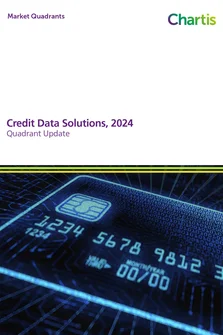<p>The Risk Enabled Enterprise<sup>®</sup> is a two-year research initiative from Chartis, in collaboration with IBM, which explores the enablers of enterprise risk management (ERM). Our research identified four strategic initiatives that firms can use to become ‘risk-enabled’ across organizational structure and process, people and culture, and data and systems. This report, covering risk-based performance management, is the last to examine these initiatives and identify best practice implementation.</p>
<p>Traditionally, performance management and risk management have been independent functions with their own perspectives and responsibilities. Performance management has focused primarily on strategy and resource planning, while risk management has been an isolated add-on to operations, focusing primarily on compliance and control activities. The disconnect reduces firms’ ability to monitor and mitigate critical risks and prevents key decision makers from leveraging risk information. In effect, it prevents firms from identifying and exploiting the bigger, smarter risks in an increasingly volatile business environment.</p>
<p>This report looks at what constitutes risk-based performance management and the steps that financial institutions can take towards its implementation. Our research included an online global survey of 120 risk professionals and in depth follow up interviews with 15 experts from FIs. Among the issues covered it considered how far FIs have progressed with their implementation of risk-based performance management, obstacles to implementation and what is driving FIs’ approach.</p>
<p><strong>Highlights</strong></p>
<p>The key findings from the research include the following:</p>
<ul>
<li>60% of FIs acknowledge that risk and finance integration is a means of improving business performance.</li>
<li>FIs recognize that they must automate and then industrialize or the costs of transformation will be too high and the transition time period too long.</li>
<li>The market requires more support / guidance from the external agencies / regulators to help with the implementation of risk-based performance measurement. IFRS 9 in particular is seen by 62% as either Important or Very Important.</li>
<li>The market still needs a clear picture of what best practice / good looks like.</li>
<li>It is evident that companies are gaining returns from investment in implementing new regulatory requirements, especially in the insurance industry. The majority of our board level contacts report that Solvency II compliance is helping their organizations in business planning and acquisition.</li>
</ul>
Only users who have a paid subscription or are part of a corporate subscription are able to print or copy content.
To access these options, along with all other subscription benefits, please contact info@risk.net or view our subscription options here: http://subscriptions.risk.net/subscribe
You are currently unable to print this content. Please contact info@chartis-research.com to find out more.
You are currently unable to copy this content. Please contact info@chartis-research.com to find out more.
Copyright Infopro Digital Limited. All rights reserved.
As outlined in our terms and conditions, https://www.infopro-digital.com/terms-and-conditions/subscriptions/ (point 2.4), printing is limited to a single copy.
If you would like to purchase additional rights please email info@chartis-research.com
Copyright Infopro Digital Limited. All rights reserved.
You may share this content using our article tools. As outlined in our terms and conditions, https://www.infopro-digital.com/terms-and-conditions/subscriptions/ (clause 2.4), an Authorised User may only make one copy of the materials for their own personal use. You must also comply with the restrictions in clause 2.5.
If you would like to purchase additional rights please email info@chartis-research.com


